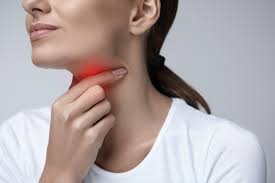PTSD/posttraumatic stress disorder, anxiety/anxiety disorders, assessment/diagnosis, trauma, treatment.
Root cause of Disease:
Post-traumatic stress disorder (PTSD) is one of the type of Anxiety that develops in some people who have experienced a shocking, scary, or dangerous event. It is natural to feel afraid during and after a traumatic situation. Fear triggers many split-second changes in the body to help defend against danger or to avoid it.
This “fight-or-flight” response is a typical reaction meant to protect a person from harm. Nearly everyone will experience a range of reactions after trauma, yet most people recover from initial symptoms naturally. Those who continue to experience problems may be diagnosed with PTSD. People who have PTSD may feel stressed or frightened, even when they are not in danger.
Symptoms:
Post-traumatic stress disorder symptoms may start within one month of a traumatic event, but sometimes symptoms may not appear until years after the event.
PTSD symptoms are generally grouped into four types: intrusive memories, avoidance, negative changes in thinking and mood, and changes in physical and emotional reactions. Symptoms can vary over time or vary from person to person.
Intrusive memories
Symptoms of intrusive memories may include:
- Recurrent, unwanted distressing memories of the traumatic event
- Reliving the traumatic event as if it were happening again (flashbacks)
- Upsetting dreams or nightmares about the traumatic event
- Severe emotional distress or physical reactions to something that reminds you of the traumatic event.
Avoidance
Symptoms of avoidance may include:
- Trying to avoid thinking or talking about the traumatic event
- Avoiding places, activities or people that remind you of the traumatic event.
Negative changes in thinking and mood
Symptoms of negative changes in thinking and mood may include:
- Negative thoughts about yourself, other people or the world
- Hopelessness about the future
- Memory problems, including not remembering important aspects of the traumatic event
- Difficulty maintaining close relationships
- Feeling detached from family and friends
- Lack of interest in activities you once enjoyed
- Difficulty experiencing positive emotions
- Feeling emotionally numb
Changes in physical and emotional reactions
Symptoms of changes in physical and emotional reactions (also called arousal symptoms) may include:
- Being easily startled or frightened
- Always being on guard for danger
- Self-destructive behavior, such as drinking too much or driving too fast.
- Trouble sleeping
- Trouble concentrating
- Irritability, angry outbursts or aggressive behavior
- Overwhelming guilt or shame
For children 6 years old and younger, signs and symptoms may also include:
- Re-enacting the traumatic event or aspects of the traumatic event through play
- Frightening dreams that may or may not include aspects of the traumatic event
Causes:
You can develop post-traumatic stress disorder when you go through, see or learn about an event involving actual or threatened death, serious injury or sexual violation.
Doctors aren’t sure why some people get PTSD. As with most mental health problems, PTSD is probably caused by a complex mix of:
- Stressful experiences, including the amount and severity of trauma you’ve gone through in your life.
- Inherited mental health risks, such as a family history of anxiety and depression.
- Inherited features of your personality — often called your temperament.
- The way your brain regulates the chemicals and hormones your body releases in response to stress.
Home remedies to treat Post-traumatic stress disorder:
Remedy-1: Exercise

There are numerous ways in which physical activity can be helpful for someone who is dealing with a diagnosis of PTSD. Exercise in a form that will provide YOU with the most enjoyment. Whether it’s strength training in the gym, running, walking, bike riding, team sports, even yoga or tai-chi, they all provide benefit for your mental health inclusive of PTSD.
Numerous types of exercise can be beneficial for those living with PTSD and that the best type of exercise is something that you enjoy. Exercising for enjoyment will further increase your changes of staying motivated and engaged with exercise. Strength/resistance based exercise, aerobic exercise and mindful-based exercise practice such as yoga can all help. So realistically, all exercise is beneficial! It comes down to what you enjoy and ultimately, what you want to achieve. That’s why the goal setting process is so important. In Nell’s case, she enjoys having a variety of exercise and subsequently set goals to ensure she could achieve this.
Remedy -2: Green tea
Materials: Green tea, Water, Honey

PTSD is a mental disorder, but it can have significant effects on the body, such as hormonal and immune system balance. We know that green tea is an immune system booster. It has soothing properties which can help to reduce nervous distress and mental anxiety. You should drink green tea or add green tea extracts to your daily diet because this is one of the most effective ways to reduce the symptoms of PTSD
Procedure:
- Boil the drinking water and allow to cool slightly for 2-3 mins.
- Pour the water onto the teabag to release its delicious aroma. Leave the teabag to infuse for up to 2 minutes and later remove the tea bag.
- You can a tablespoon of honey to improve the taste.
Product link: Green tea
Remedy- 3: Kava root

Kava root is one of the best home remedies for people who are looking for strong relaxant agents that are very important for people who suffer from nervous episodes or panic attacks as a result of PTSD. This is a powerful natural muscle relaxant which is coming in many forms, such as capsules, tinctures, and teas. In many countries, the use of kava is banned or restricted, and it can have side effects, so this is a reason why you need to talk with your doctor before you start using it.
Product link: Kava
Remedy -4: Chamomile tea
Materials : Chamomile, Water, Honey

Chamomile tea has been used for thousands of years to settle and soothe upset nerves. It is one of the best home remedies for PTSD. If you feel that a bad day is coming on, then the natural compounds of chamomile can help to relax your nerves in a quick way, and they will dispel negative thoughts.
Procedure:
- Take a saucepan and start heating water on a high heat.
- Once the water starts boiling, switch off heat and add the dried chamomile. Keep it covered for a minute.
- Strain the chamomile tea into the tea cups.
- Add honey to taste (only as a sweetener, you can completely skip it), give it a swirl and serve.
Product link: Chamomile
Other remedies
- Develop a meditation practice: Meditation is known to help manage emotions and maintain a calm state of being. It teaches you to pay attention to how you’re breathing and what you’re thinking. Studies show that meditation, along with other alternative practices such as hypnotherapy, acupuncture, and visualization, can all be beneficial in treating PTSD.
- Eat a balanced, healthy diet: The foods you eat can either reduce or increase your stress levels. Food matters when it comes to coping with PTSD symptoms. Consider adding various colors of fruits and vegetables to your daily diet.
- Engage in daily physical activity : Exercise has myriad benefits for managing stress, improving immunity, and feeling confident about yourself. Research shows that regularly exercising can bring peace, calm, and positive change when it comes to PTSD.
- Be mindful of your caffeine intake: While caffeine is known to have certain health benefits, it can also cause anxiety and exacerbate PTSD symptoms. Be aware of your intake of coffee, tea, energy drinks, and other substances that are likely to contribute to anxiety.
Preventions:
Unfortunately, there is no way to expedite the process of healing from trauma. The human condition is simply hard and comes jam-packed with suffering. The good news is that the intensity of emotional pain always reduces with time.
Some prevention strategies for PTSD:
- Continuous contact with and support from important people in your life.
- Disclosing the trauma to loved ones.
- Identifying as a survivor as opposed to a victim.
- Use of positive emotion and laughter.
- Finding positive meaning in the trauma.
- Helping others in their healing process.
- Holding the belief that you can manage your feelings and cope.




